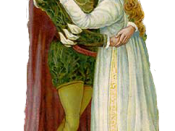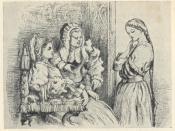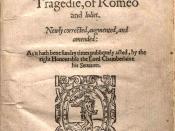The story of Romeo and Juliet is easily one of the world's most famous love stories, told and retold many times in English, French, and Italian, from which the real origins of the story come. Shakespeare retold the story too in 1595, creating the most popular version of the story ever told. Shakespeare's Romeo and Juliet is a masterpiece exploding with verbal genius: double entendres, puns, rhyme schemes, and complete sonnets within the text. Shakespeare took the story of the ancient Italian family feud and told it through his own eyes, changed it a little with his own creative allowance, and gave us his version in the form of a play.
Baz Luhrmann did the same in 1996, mirroring the famous love story in the form of a film. Luhrmann saw a tragic flaw in the 400-year-old story: it's language. When performed on a nearly blank stage, or read from plain text, the story is not accessible to our 21st century MTV generation.
Despite the language barrier, Luhrmann could not part with the beauty of Shakespeare's Elizabethan words. Instead he gave us the story clarified by other means. He placed the actors in a modern setting, and used their modern facial expressions, gestures, and interactings to show the meaning of Shakespeare's words.
Of course, in the transition from Shakespeare's text to the modern beachfront world, the story is told through Luhrmann's own eyes. He has evolved the story around Shakespeare's words and placed it in a world that we all understand. Luhrmann's Romeo + Juliet, despite it's differences, still retains most of the ideas that Shakespeare laid out four-hundred years ago.
The most obvious difference of Luhrmann's Romeo + Juliet is the setting. Immediately we are taken by helicopter view to a panorama of a contemporary American coastal city called...



Romeo + Juliet
baz luhrmanns film does break the language barrier, but did the characters in the film have to yell every line?? shakespeare actually follows a rhythym, which baz certainly didn't, good writing though..
2 out of 2 people found this comment useful.